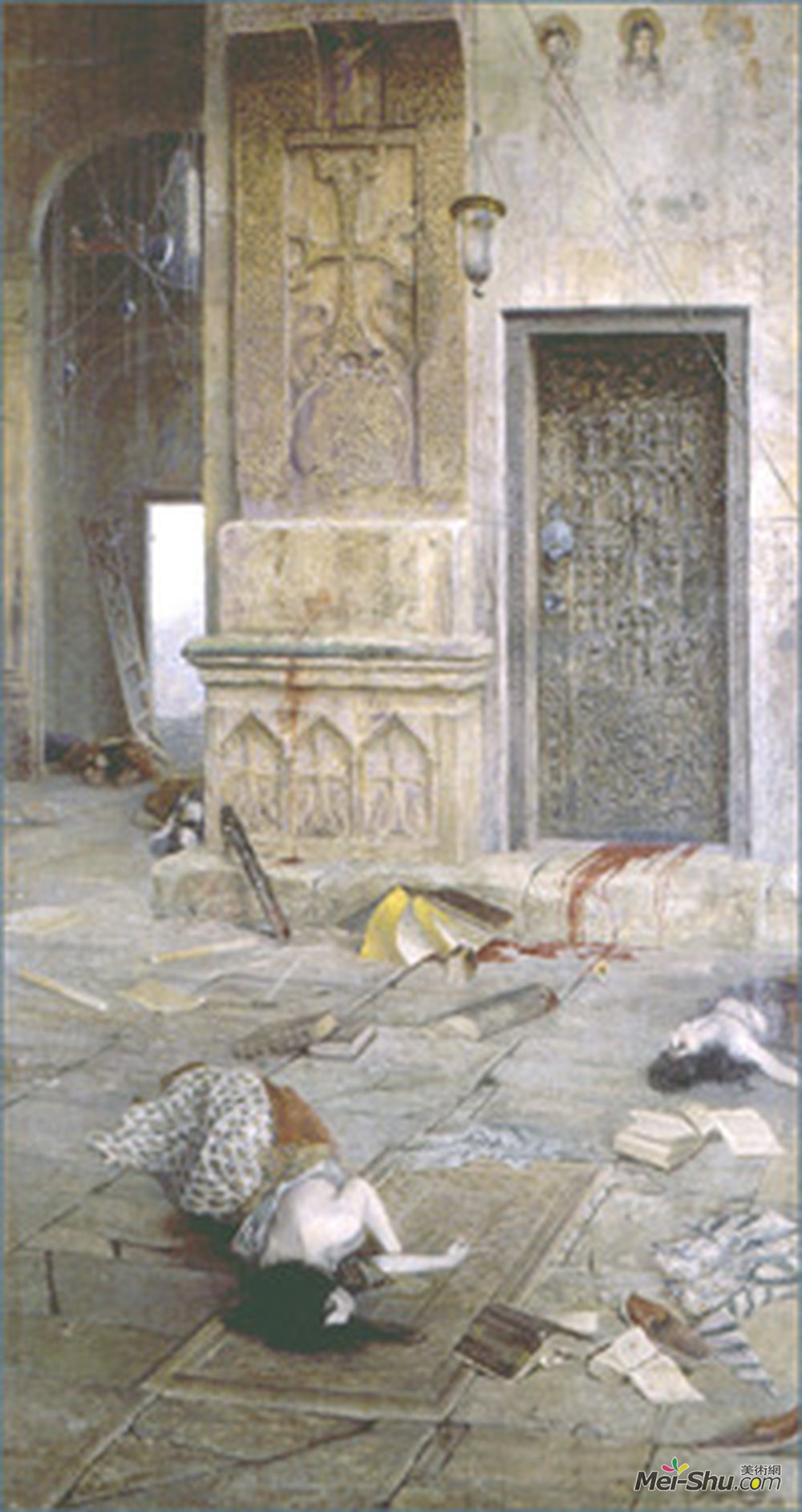 瓦尔德格斯·苏伦尼扬茨(Vardges Sureniants)高清作品《大屠杀之后》
瓦尔德格斯·苏伦尼扬茨(Vardges Sureniants)高清作品《大屠杀之后》
作品名:大屠杀之后
原名:??????????
艺术家:瓦尔德格斯·苏伦尼扬茨
年代:1899
风格:象征主义
类型:历史绘画
材质:布面油彩
尺寸:93 x 173 cm
哈米德大屠杀,也称为1894-1896年的亚美尼亚大屠杀和大屠杀,是1890年代中期对奥斯曼帝国的亚美尼亚人的屠杀,估计死亡人数在8万至30万之间,造成5万孤儿。这些大屠杀是以苏丹·阿卜杜勒·哈米德二世命名的,他在努力加强被围困的奥斯曼帝国的领土完整时,重申泛伊斯兰主义是一种国家意识形态。尽管大屠杀主要针对亚美尼亚人,但它们变成了不分青红皂白的反基督教的泼格。在一些案件中,例如在迪亚贝克尔·维拉耶特,大约有2500名亚述人被杀害(参见亚述种族灭绝)。大屠杀始于1894年奥斯曼内陆的事件,在1894-96年获得全部武力,并在1897年逐渐减少,因为国际谴责带来了承受压力的压力。论Abdul Hamid。虽然奥斯曼人先前镇压过其他叛乱,但最严厉的措施是针对亚美尼亚社区。他们没有区分年龄和性别,用残酷的武力屠杀他们。这发生在电报可以向全世界传播新闻的时候,大屠杀在西欧和美国的媒体上得到了广泛的报道。
Title:After the Massacre
Original Title:?????? ????
artist:Vardges Sureniants
Date:1899
Style:Symbolism
Genre:history painting
Media:oil,canvas
Dimensions:93 x 173 cm
The Hamidian massacres, also referred to as the Armenian Massacres of 1894–1896 and Great Massacres, were massacres of Armenians of the Ottoman Empire in the mid-1890s, with estimates of the dead ranging from 80,000 to 300,000, resulting in 50,000 orphaned children. The massacres are named after Sultan Abdul Hamid II, who, in his efforts to reinforce the territorial integrity of the embattled Ottoman Empire, reasserted Pan-Islamism as a state ideology.Although the massacres were aimed mainly at the Armenians, they turned into indiscriminate anti-Christian pogroms in some cases, such as in Diyarbekir Vilayet, where some 25,000 Assyrians were killed (see also Assyrian genocide).The massacres began with incidents in the Ottoman interior in 1894, gained full force in 1894–96, and tapered off in 1897, as international condemnation brought pressure to bear on Abdul Hamid. Although the Ottomans had previously suppressed other revolts, the harshest measures were directed against the Armenian community. They observed no distinction between ages or genders, and massacred them with brutal force.This occurred at a time when the telegraph could spread news around the world, and the massacres received extensive coverage in the media of Western Europe and the United States.
作品名称:《大屠杀之后》瓦尔德格斯·苏伦尼扬茨(Vardges Sureniants)高清作品欣赏
作品链接:https://www.mei-shu.com/famous/26723/artistic-89413.html
作品类别:油画
免责声明:本站部分公开资料来源于互联网,目的是用于学术交流与讨论,并不代表本网赞同其观点和对其真实性负责。如果您认为我们的侵犯了您的权益,请与我们联系(banquan#mei-shu.com #替换为@),我们将在第一时间删除相关内容。